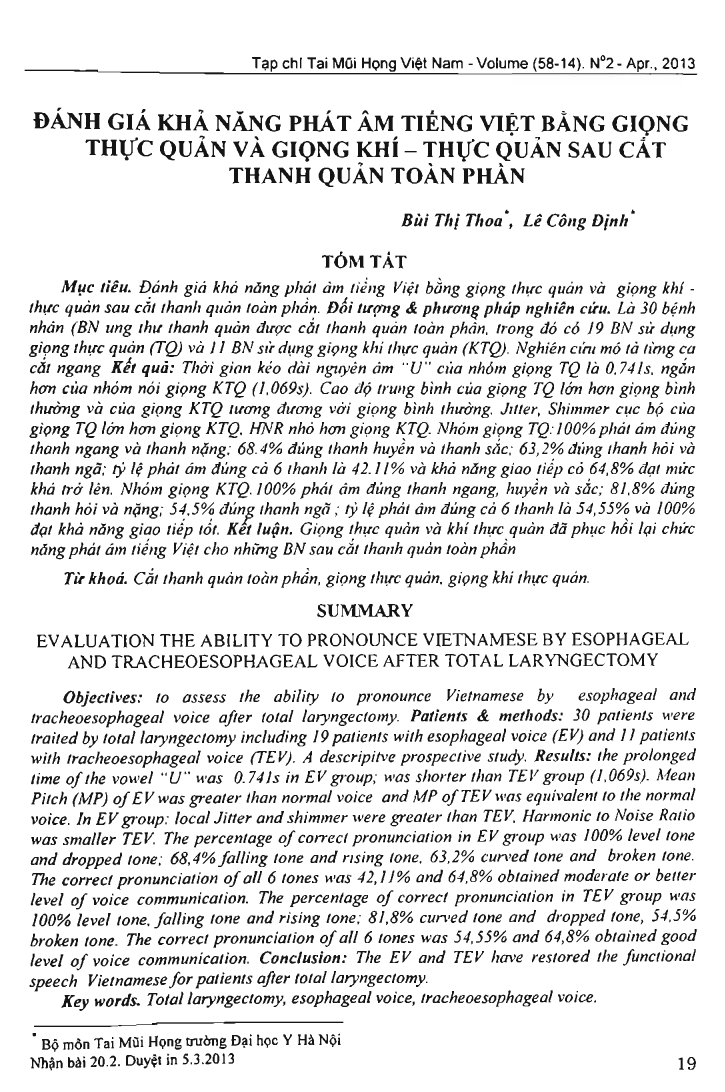
Objectives: to assess the ability to pronounce Vietnamese by esophageal and tracheoesophageal voice after total laryngectomy. Patients and methods: 30 patients were traited by total laryngectomy including 19 patients with esophageal voice (EV) and 11 patients with tracheoesophageal voice (TEV). A descripitve prospective study. Results: the prolonged time of the vowel "U" was 0.741s in EV group; was shorter than TEV group (1,069s). Mean Pitch (MP) of EV was greater than normal voice and MP of TEV was equivalent to the normal voice. In EV group: local Jitter and shimmer were greater than TEV, Harmonic to Noise Ratio was smaller TEV. The percentage of correct pronunciation in EV group was 100 percent level tone and dropped tone; 68.4 percent falling tone and rising tone, 63.2 percent curved tone and broken tone. The correct pronunciation of all 6 tones was 42.11 percent and 64.8 percent obtained moderate or better level of voice communication. The percentage of correct pronunciation in TEV group was 100 percent level tone, falling tone and rising tone; 81.8 percent curved tone and dropped tone, 54.5 percent broken tone. The correct pronunciation of all 6 tones was 54.55 percent and 64.8 percent obtained good level of voice communication. Conclusion: The EV and TEV have restored the functional speech Vietnamese for patients after total laryngectomy.
- Đăng nhập để gửi ý kiến
